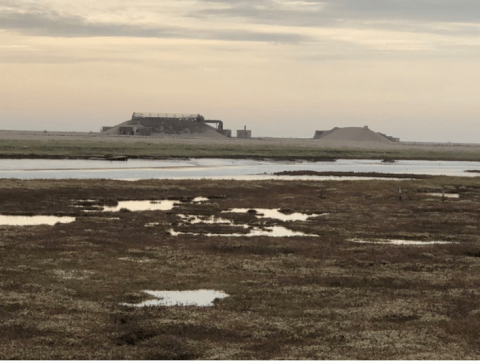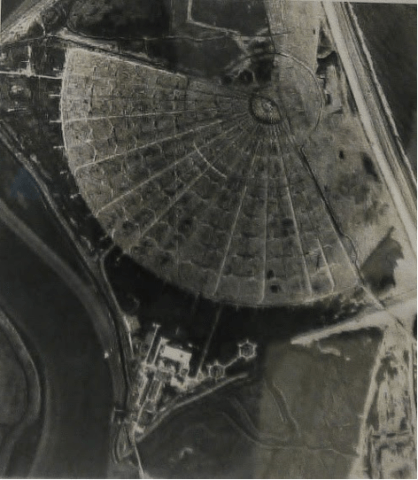The History Column: COBRA MIST
Orfordness is a remote, low-lying, gravel-covered spit of land on the east coast of England, some 10 km long by 2 km wide. It was used by the British Air Ministry for weapons testing, and also by Robert Watson Watt and his team of scientists for their early experiments on radar in 1935, till they moved to Bawdsey Manor (about 10 km south of Orfordness) in March 1936. It is now a nature reserve, owned by the National Trust.

Work began at Orfordness in mid-1967 to build a sophisticated Over-The-Horizon (OTH) radar for the US Air Force to monitor aircraft and missiles in Soviet Russia and eastern Europe. The contract had been awarded to RCA. The type designation was AN/FPS-95 and the codename was COBRA MIST. The design was based on the US Naval Research Laboratory’s MADRE (Magnetic Drum Radar Equipment) radar at Chesapeake Bay, and COBRA MIST formed part of a larger network of OTH radars. It operated over the band 6 – 40 MHz.
OTH radars are able to achieve extremely long ranges by reflecting their signals off the ionosphere. During daytime, solar radiation causes dissociation of the molecules in the atmosphere into ions and free electrons. During nightime the ions and electrons recombine. The effect is greatest during the summer when the days are longer, and around the peak of the sunspot cycle of solar activity. The reflectivity of the ionosphere is therefore a complicated function of frequency, time of day, time of year and of the sunspot cycle, which requires the correct frequency to be chosen for the desired coverage at any given time.
Authored by Hugh Griffiths
University College London
Added to that is the complication that there are many other users of the HF bands, so care has to be taken to avoid interference, both to and from the radar.
The specification for the COBRA MIST antenna (shown below) stated: ‘The full array of the system shall consist of 18 strings of individual antennas arranged in a fan-pattern, spaced radially, 7° on centers, having a common focal point. Each string shall be 1,800 ft long, elevated at an inclined angle approximately 3°. Each string shall have an arrangement of electrical elements comprised of four power transmission lines held together in a fixed relation by insulating spacer rings. Attached to the transmission lines shall be a log-periodically spaced arrangement of crossed-dipole arms. All of the electrical elements shall be fabricated of 2-in. aluminum tubing’.

Construction was completed in July 1971, and the radar became operational in January 1973. In practice it was found that the noise level was higher than anticipated, so the intended performance was never achieved. Several investigations failed to find the exact cause, and on in June 1973 the system was shut down and eventually dismantled. The report ‘The Enigma of the AN/FPS-95 OTH Radar’, dated 1979 (originally SECRET but now declassified) gives much more detail, but does not reach a definitive conclusion as to the source of the problem.
The failure of the project underlines just how complex such radars are. Pretty much all of the signal processing at that time was analog, since digital computation power was primitive, and the dynamic range of the receivers was not especially good.
Nowadays, the Australian JORN HF OTH radar achieves impressive performance, but this has benefitted from 50 years of advances in technology and in hard-won experience. That places COBRA MIST in context.
I express my thanks to Stuart Anderson for his advice, insight, and friendship.
Further information may be found in: https://en.wikipedia.org/wiki/Cobra_Mist
E.N. Fowle, E.L. Key, R.I. Millar and R.H. Sear, ‘The Enigma of the AN/FPS-95 OTH Radar’, available at: https://www.semanticscholar.org/paper/The-Enigma-of-the-ANfFPS-95-OTH-R…
Yen H Dong, ‘World’s largest log-periodic antenna’, J. Structural Division, Proc. American Society of Civil Engineers, 97(9), pp2371-2381, 1971.
https://www.28dayslater.co.uk/threads/orford-ness-awre-cobra-mist-march…
G. Fabrizio, D. Holdsworth, B. Ward and D. Sinnott, ‘Evolution of Over-the-Horizon radar in Australia from humble origins to operational capabilities’, IEEE AES Magazine, Vol.38, No.1, January 2023.

